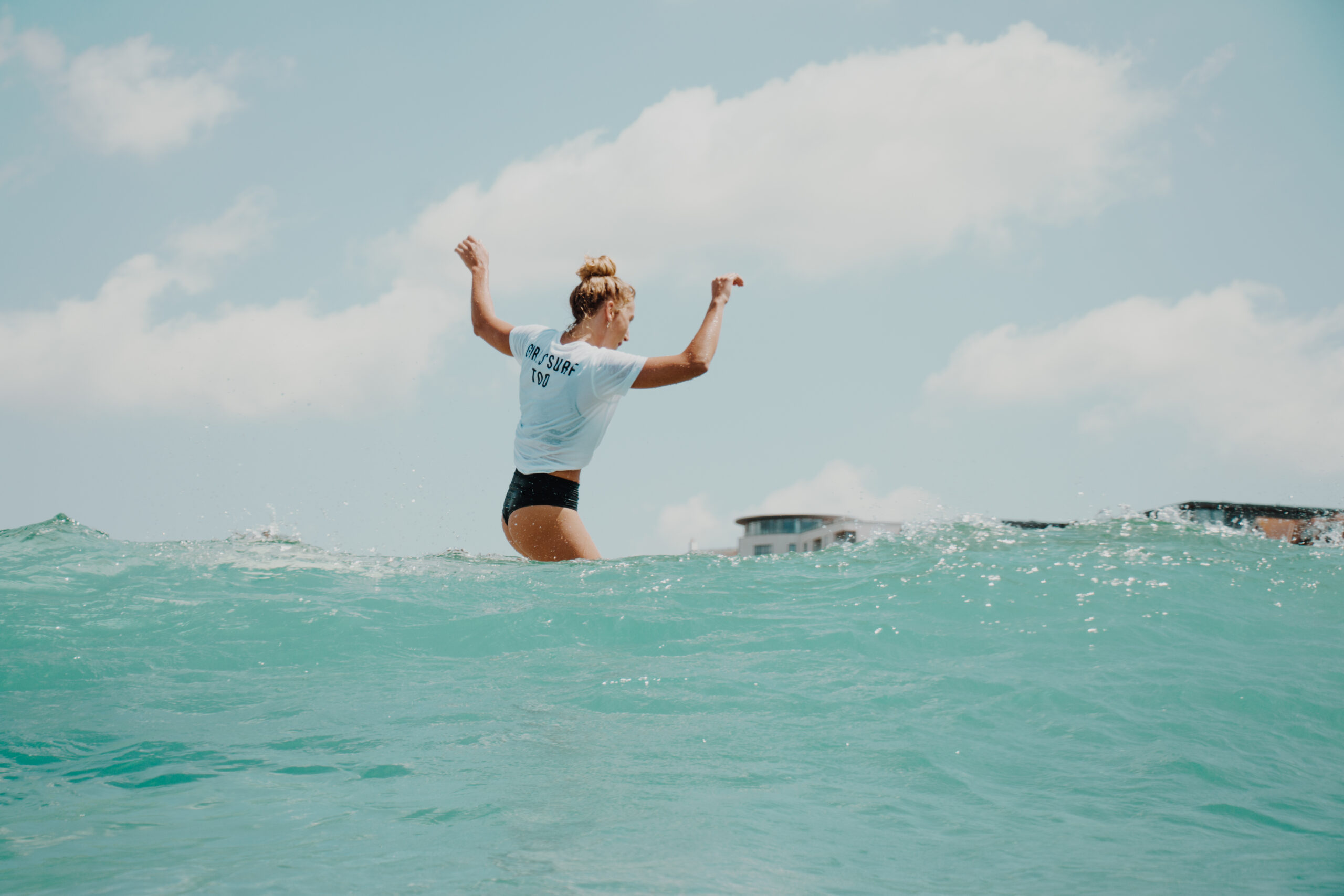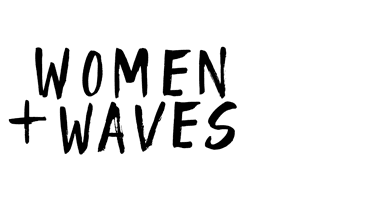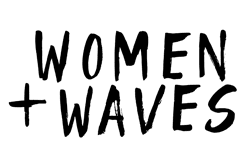
13 Aug Everything You Need To Know About Longboarding
Ah, longboarders. Those elegant beings who dance along their boards like a salty ballerina. No doubt you’ve watched one in awe at your local break, gracefully stepping up to the nose and effortlessly levitating in the curl of the wave. It might seem like an impossible feat to be able to walk on water like that, but with a bit of practice and commitment, you’ll soon see how much fun longboarding can be!
What is longboarding?
Compared to the fast-paced, snappy manoeuvres of shortboard surfing, longboarding is generally a slower paced, more relaxed style of surfing. With cruisey trims, poised noserides and elegant cross stepping, it’s less about attacking the wave and more about dancing with it.
As the name suggests, a longboard is longer than a shortboard at 9-foot plus. They generally have a rounded nose and thicker rails, with either a thruster or single fin setup depending on the style of longboarding you want to surf. The extra length and foam in a longboard makes everything easier – from paddling into waves to staying balanced when standing on the board.

With longboarding you have two different styles. There’s high-performance longboarding, which uses a longboard with a thruster setup that’s more similar in shape to a standard shortboard (but longer) to perform manoeuvres that you see in shortboarding (like floaters, powerful cutbacks etc). But since the longboard is a lot heavier than a shortboard, you use a totally different technique from the one you’d use to manoeuvre a shortboard.
Then there’s the classic style of longboarding, aka logging, which harks back to traditional Hawaiian wave riding. It uses a 9-foot plus single fin longboard with a wider nose and flatter rocker to perform a different set of manoeuvres, like cross stepping (walking along the board) and nose riding (balancing on the nose of the board). Classic longboarding is like a dance: you can step to the front of your board to perform a hang five (hanging five toes over the edge of the nose), then bringing your other foot forward for a hang ten (ten toes over the nose) before cross-stepping back towards the tail to cutback into the pocket, all the while matching your rhythm with the wave.

Why do people longboard?
There are heaps of reasons why you might want to give longboarding a go. First up, who doesn’t want to look like Josie Pendergast cruising along perfect peelers at The Pass? But seriously, you really can’t beat the feeling of pure glide that a longboard can give you. Ask any logger why they longboard and they’ll probably tell you the same thing. It’s a desire to experiment with the sensations of glide, to dance with the wave while tip toeing up and down the board and to challenge the basic physics of flotation and gravity by balancing on the nose. It’s a chance to really get creative with your surfing, to develop your own unique style and to let your personality shine through.
In a more practical sense, you might live next to a mellow point break which doesn’t get much swell. In which case, longboarding allows you to make the most of smaller waves and still have fun when it’s too small for a shortboard.

Who are some longboarders to get inspired from?
Thomas Campbell wasn’t lying when he said: “It’s a rare occurrence when you see a woman riding a proper single fin longboard. But when you do, and it’s done right, it’s one of the most beautiful forms of surfing there is.” There are loads of stylish lady loggers out there who are just a dream to watch. We love the graceful poise of Josie Prendergast, Marina Carbonell’s steeze, Leah Dawson’s effortless feminine surf style and Kelis Kaleopa’a’s ability to combine high-performance power moves with classic elegance.

When can you longboard?
If you want to have the most fun on your longboard, head out when the conditions are smaller, clean and glassy. You want shoulder to head-high waves that have a nice wall for noseriding. Fast, barreling waves aren’t so fun on a longboard unless you’re super experienced, and if the surf gets overhead then things could get dangerous since the boards are too heavy for quick bottoms turns.

WHERE ARE THE BEST PLACES TO LONGBOARD?
Anywhere with long, smooth rollers that break slowly and steadily will be perfect for longboarding. Morocco is a longboarder’s paradise, with peeling point breaks that go on forever. Our Secret Surf Morocco trip takes you to uncrowded peaks where you can practice your cross stepping in peace. Costa Rica is our fave place for tropical slides, with mellow beach breaks and stunning scenery. Closer to home, Crantock in Newquay has a super nice right-hander that’s great for logging, and the easy-going wave at Saunton Sands in North Devon is ideal for perfecting your noseriding skills.

Okay, so how do you do it?!
Learning to longboard is super rewarding – once you get your first hang five, you’ll never look back! But it can be tricky making those first tentative steps towards the nose. A tip to get you started is to commit to the cross step and ditch the foot-shuffle! Not only does it look more stylish to step your back foot in front of your front foot, it will allow you to move more fluidly and eventually get to the nose quicker.
As you prepare to make your first step, keep your weight in your back foot to avoid falling forward, take a breath in, then on the exhale shoot your back foot across your front foot and then bring that front foot back to the front. Focus on making small steps to begin with, keeping a tall posture and a bend in your knees. And keep practicing!

Want to know more about how to longboard? We’ll be giving you all the tips, tricks and tools to becoming a nose-riding queen in our upcoming Longboarding Series:
Written By Lily Plume



1 Comment